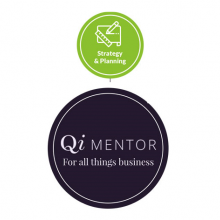
Cash is the life blood of an organisation and you must be proactive and disciplined in your approach to managing this finite resource. For an established business or a new start-up there are five key elements to Finance you will have to consider. The most important theme behind all these elements is cash flow as, from the smallest operation to the running of a national economy, even a global one, cash must flow around the system.
1. Costs
What will it cost to develop and produce your product or service? Costs can be looked at in two ways:
Direct Costs: the costs of making your product, these are usually variable, depending on demand, and are also paid upfront.
Indirect Costs: these are the costs of running your business, the rent, utilities, payroll etc. These are usually fixed and are accounted for on an annualised basis.
2. Sales
The price you sell your product will make or break your business, therefore you MUST price for profit. What are your expected sale volumes against price? This number is your sales revenue. This will be an important part of your Cash Flow forecasting. So, how do you set Price?
- Costs: what does it cost from raw materials, production, distribution for your product?
- Where do you sit compared to competitor pricing? Are you competitive?
- What are your customers willing to pay?
- Consider your company objectives, what are you planning to achieve, your profits, what does success look like to you?
Estimating Sales Revenue and answering these questions is not easy, but by building a model that will allow you to track progress it is made significantly easier.
3. Finance Forecasting - Profit and Loss, and Cash Flow
Here you test the Finance Model for the business. The Profit and Loss forecast will give you an estimate of your financial status, considering your estimated income versus your outgoings and expenses. This will typically be over a year, or shorter periods if required. The Cash Flow forecast will use the Profit and Loss data and will give you your financial status at any point in time. While a Profit and Loss forecast can look great over twelve months it may hide a period where there is significant disparity in income versus outgoings. This may mean expensive short-term loans are required or the viability of the business may be threatened. Hence the importance of cash flow.
With Cash Flow in mind having operating rules around the following areas will help:
- Accounting and reporting must be up to date and accurate
- Maintain a strict and fair invoicing strategy
- Build a cash reserve
- Get advice when you need it, consultants are available to help you improve systems, processes, or to double-check your forecasting and strategy.
- Reduce outgoings – minimise non-essential purchases or eliminate them altogether
4. Keeping a Tight Rein on Your Financial Record Management
Ensure you have as good a bookkeeping system that you can afford, get advice early and follow it. Automate as much as you can using a computerised finance system, this way you will know your current and future financial position through the reporting tools available. By automating a lot of the processes, you will make BAS statements, GST reporting, annual income tax returns a lot less time consuming than they would be otherwise.
5. Keep the Cash Flowing
- Send out invoices as soon as possible
- Streamline the payment process for your debtors by having payment terms and details readily available.
- Chase payment politely but firmly









